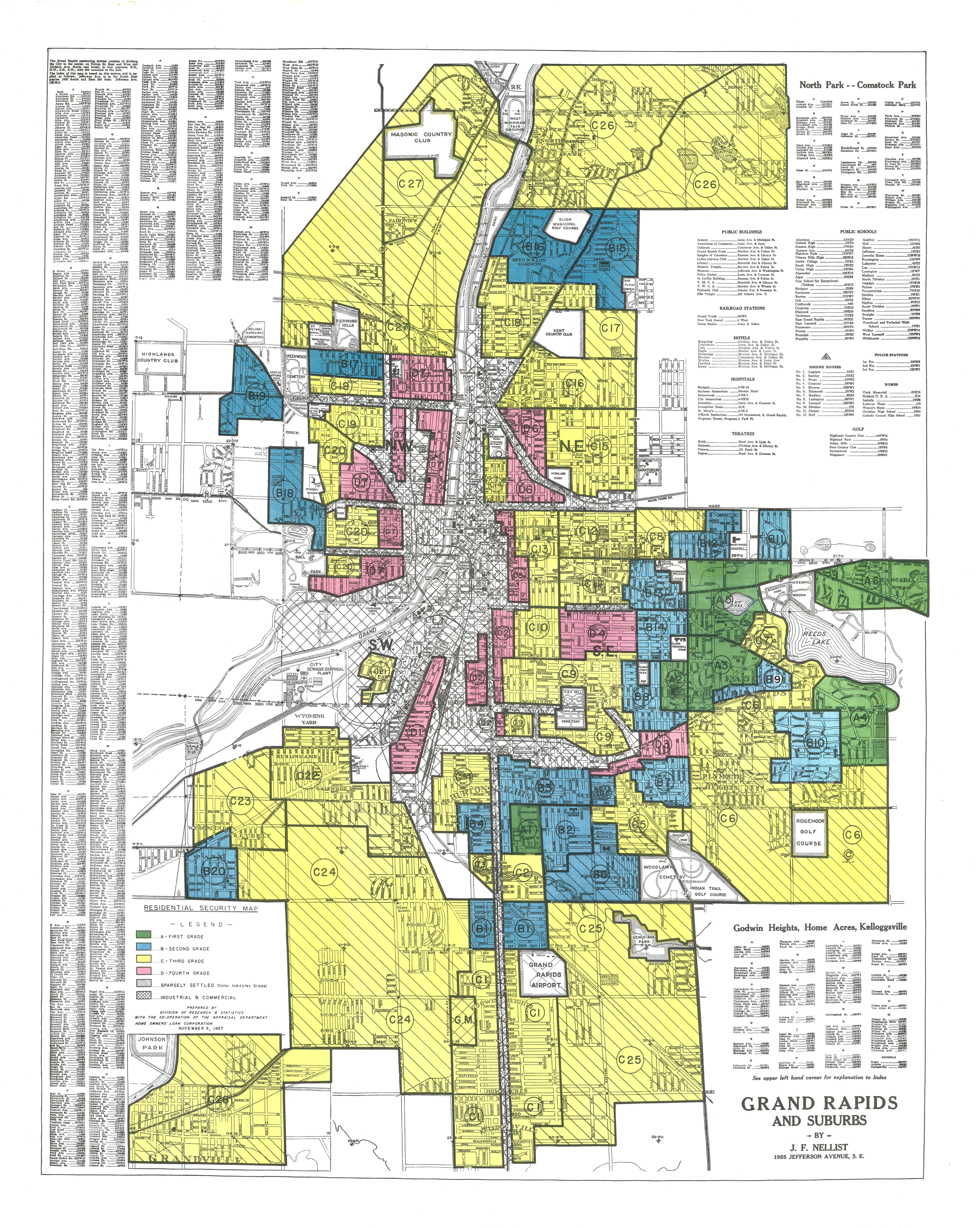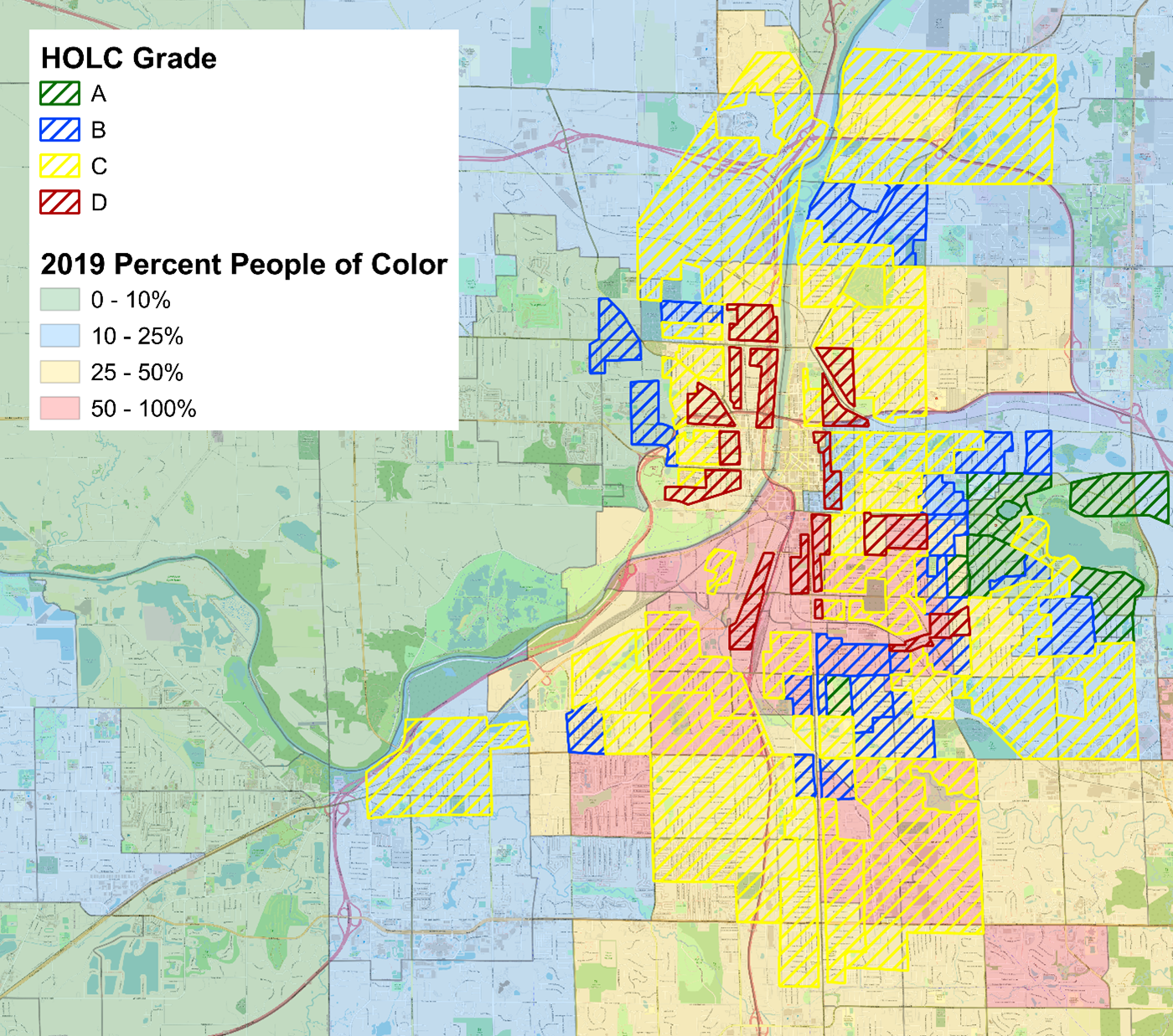Grand Rapids
The federal government redline mapped Grand Rapids on November 5, 1937. Consistent with the requirements of the government Underwriting Manual, the redline mapping specifically targeted residents of color, deeming their neighborhoods as “hazardous” to investment because they had residents of color or were even near residents of color. The original redlining map is shown below. While HOLC did not itself implement these redlining maps, it promoted these practices and showed private industry groups and the FHA how to reproduce these maps. We also have a map overlaying the original HOLC boundaries on present-day segregation, which starkly show the continued effects of these racist practices. The strong visual connection between original HOLC grades and present-day racial segregation, shows a legacy of redline mapping on present-day outcomes.

Grand Rapids Neighborhood Grading Justifications
The racist language and explanations below are quoted from the “Area Description Files” filled out by government appraisers. The language and justifications are coarse and offensive. Nonetheless, it is important to remember our past in all of its coarseness is offensiveness to fully understand the context that we confront today, especially when developing equitable housing policies.
Redlined neighborhoods
Government appraisers redlined the southern neighborhood because Black people and “foreign-born” Dutch people lived there, noting that the neighborhoods were otherwise desirable; central neighborhoods because the types of inhabitants included Black people and “Foreign-born” Italians.
Government appraisers redlined the neighborhoods now known as South Hills and Baxter because of the “types of inhabitants,” despite “Negroes in area [being] of better type.”
Yellow-graded neighborhoods
Government appraisers gave downtown neighborhoods a yellow grade because there were near redlined neighborhoods and outer neighborhoods in areas like Grandville, Wyoming Township, Paris Township, and North Park because future development was uncertain.
Blue-graded neighborhoods
Northern neighborhoods were graded as blue because although the schools were segregated and the residents were rich (both “favorable influences”), the distance to redlined neighborhoods in the city center was not far enough.
Government appraisers graded some Wyoming Township neighborhoods blue because their schools and population were well-segregated.
Green-graded neighborhoods
Government appraisers gave East Grand Rapids neighborhoods a green grade because they were sufficiently segregated from redlined neighborhoods and wealth White people lived there.
The Legacy of Redlining in Grand Rapids
We overlay the historical HOLC “redlining” map on present-day demographic data to show the persistence and continued relevance of these racist policies on present-day segregation. We mirror the racist HOLC color gradation to help visualize the continued segregation, as a lasting impact of redlining.

Higher segregation is associated with lower incomes, lower educational attainment, more crime, worse health outcomes, and higher inequality. But segregation is not the only lasting impact of redlining in Michigan Cities, or in Grand Rapids. Researchers have shown that redlining also directly reduced many of these outcomes.
This research was conducted by Michigan State University Assistant Professor and Extension Specialist Craig Wesley Carpenter, Ph.D. (@DrCWCarpenter or cwcarp@msu.edu).



 Print
Print Email
Email